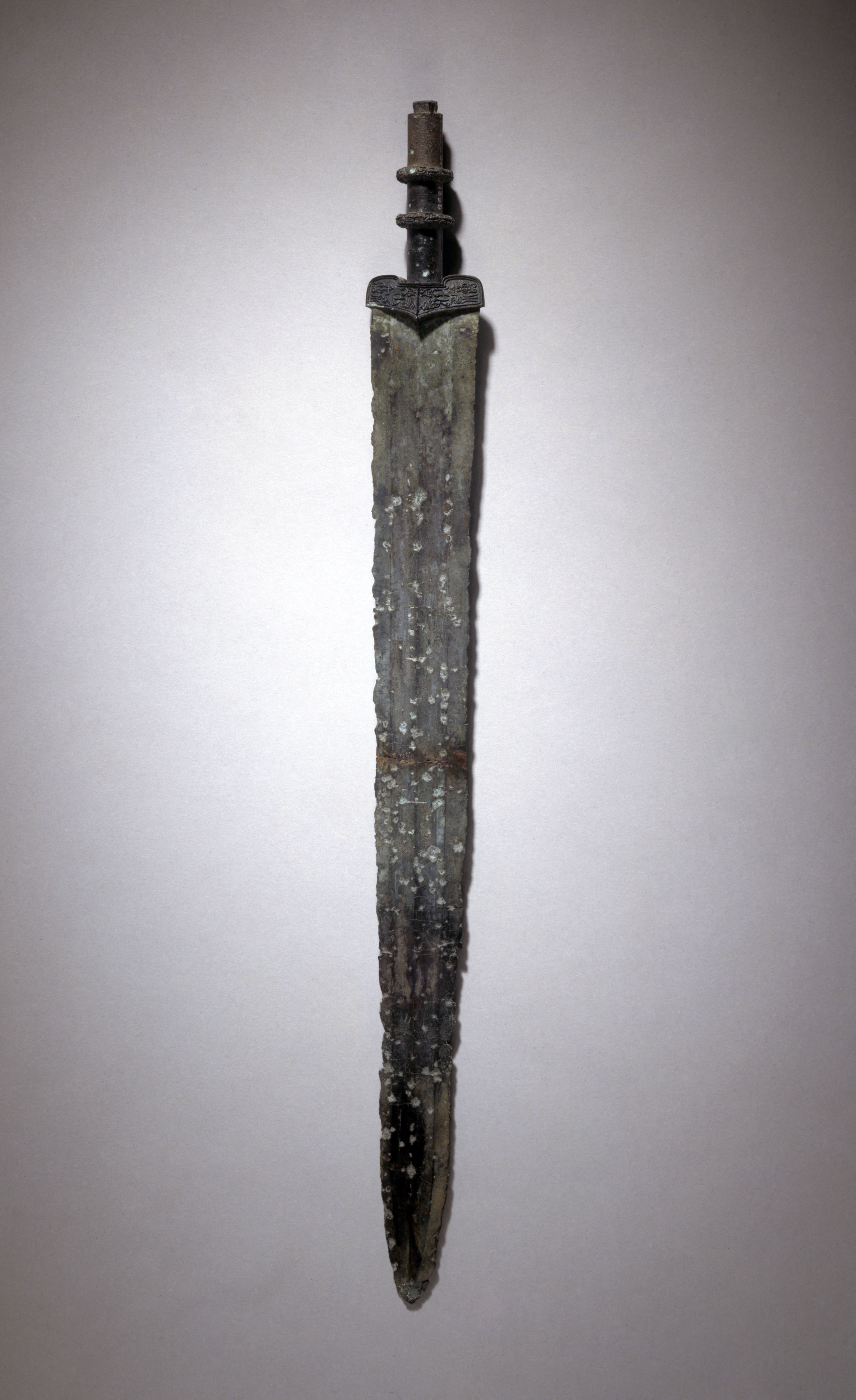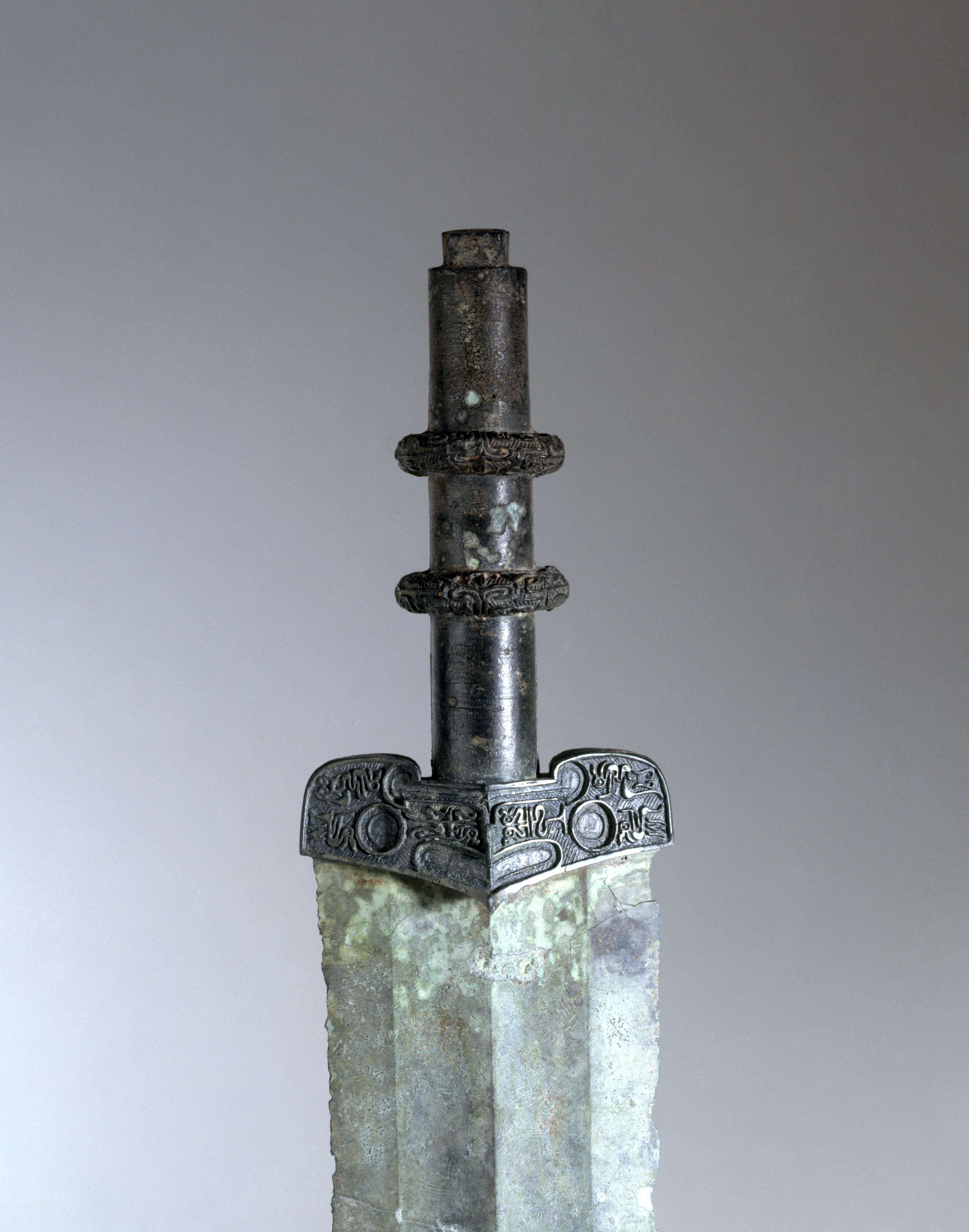
Glaive
Bronze, Fonte
Arme
Achat
M.C. 8621
The flat two-edged sword appeared relatively late in China. The oldest specimens found at Shangcunling in Henan attest to its use before 655 BC. There is some dispute about its origin, which some consider as an authentically Chinese evolution of the daggers from the Western Zhou period (circa 1050-771 BC) and others as an innovation from the first half of the 7th century BC, following contact with the “Barbarian” populations living on the northern and western boundaries of the Zhou kingdom. A two-edged sword would always be placed in aristocratic graves.
The Wu, Yue and Chu kingdoms had particularly active production centres, exporting their swords as far away as the Jin kingdom in northern China. In the Wu kingdom, they specialised in incrustations of precious metal and turquoise. The blades were generally made of bronze; they could also be made of iron, but in China, iron never supplanted bronze for weapons placed in tombs.
The guard (yin) of this two-edged sword bears an inscription and fourteen “bird”-type characters (niaozhuan), a symbol specific to the kingdoms of southern China. It mentions the name of the person for whom the sword was made, Zhougou, king of Yue, who reigned from 448 to 412 BC. According to literary tradition, ten two-edged swords were made for him. One of the sides of the guard features a grimacing mask, an echo across the millennia of the enigmatic faces that decorated the jades of the Liangzhu culture (circa 3400-circa 2200 BC).
Gilles Béguin, Arts de l'Asie au Musée Cernuschi, Paris, Paris-Musées/Findakly, 2000, p.54.

